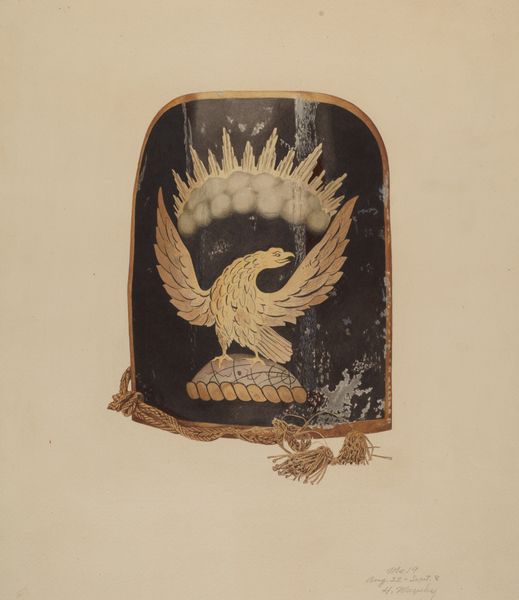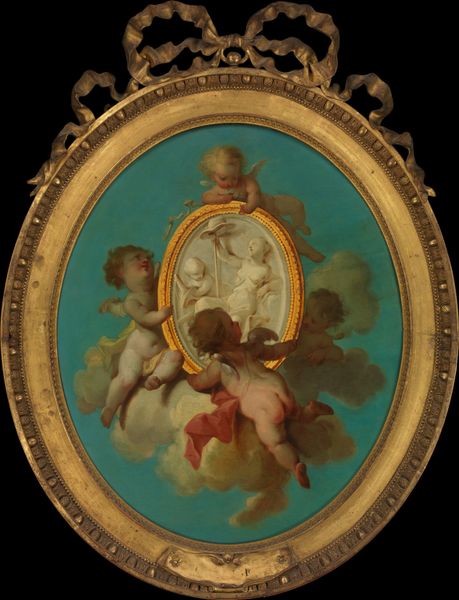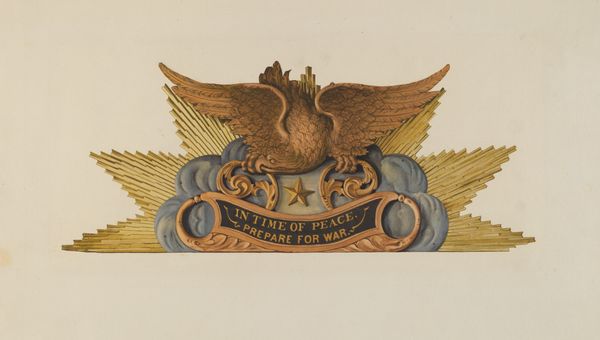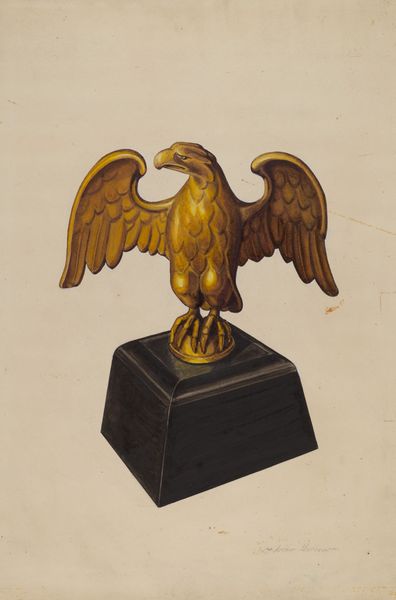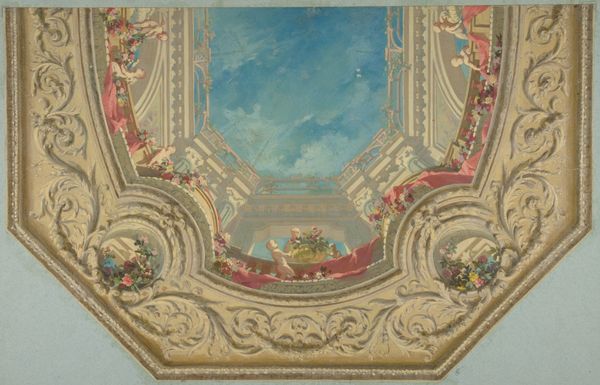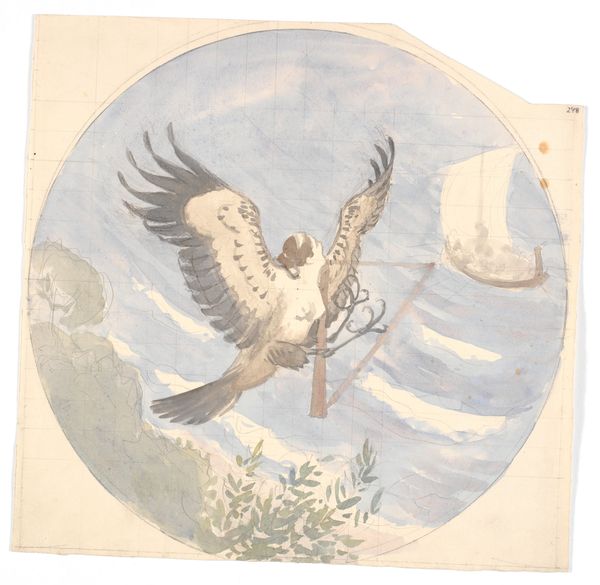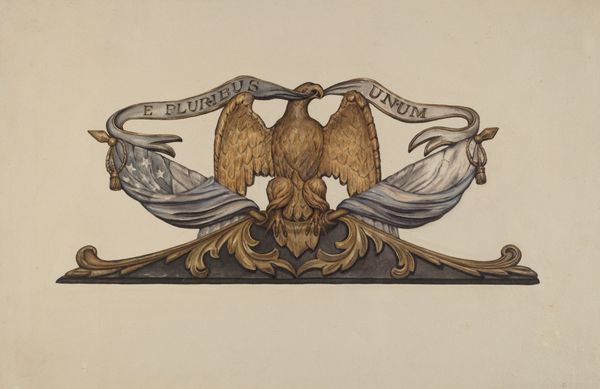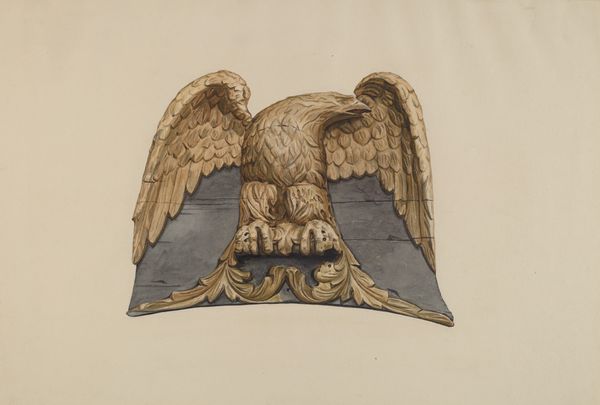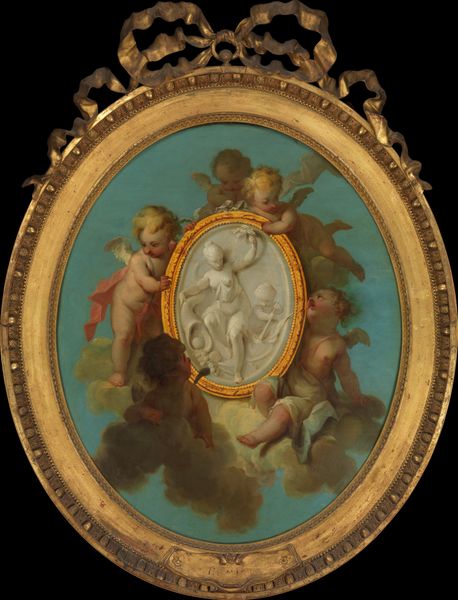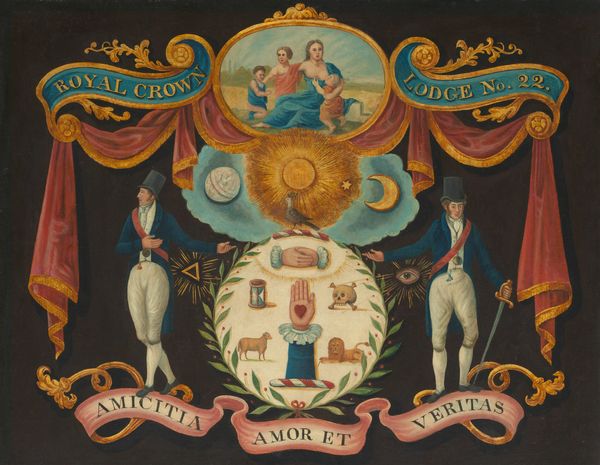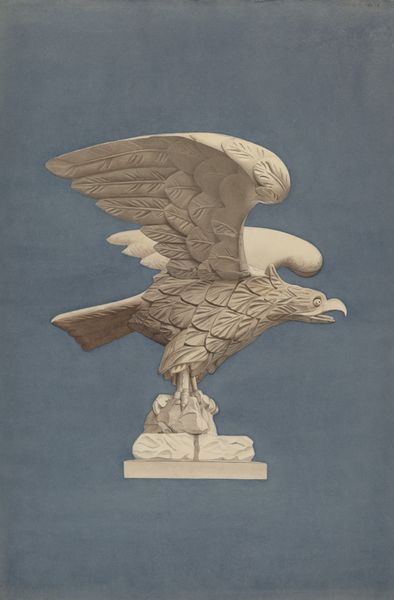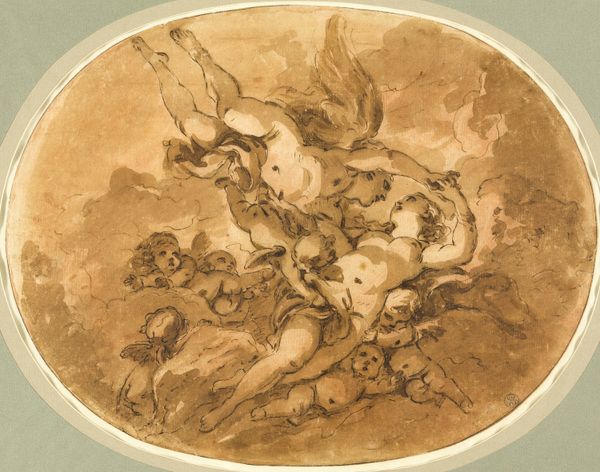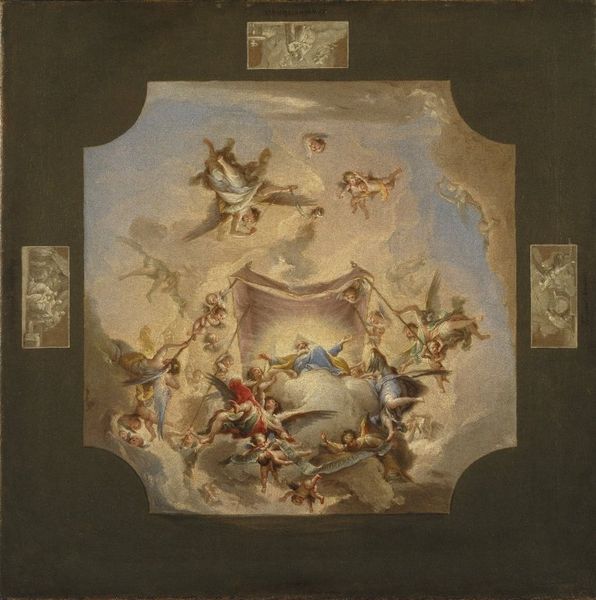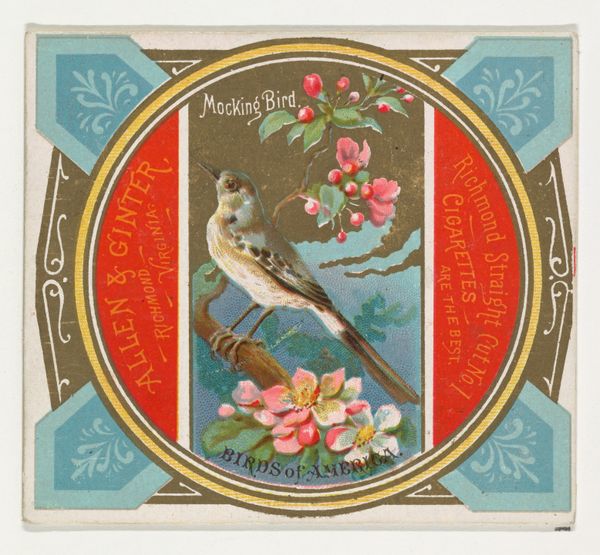
painting, oil-paint
#
allegory
#
narrative-art
#
baroque
#
painting
#
oil-paint
#
fantasy-art
#
figuration
#
history-painting
Dimensions: height 112 cm, width 114 cm, depth 6 cm
Copyright: Rijks Museum: Open Domain
Editor: Here we have Cornelis Troost's oil painting, "The Phoenix," created sometime between 1720 and 1750. It's… striking, in a somewhat unsettling way. The phoenix itself looks a bit worse for wear, if I'm honest! What catches your eye in this piece? Curator: Ah, yes, Troost’s Phoenix! It's more than just a depiction; it's a symbol bubbling up from the ashes of meaning. Think of the Baroque era – such flamboyant emotion painted with serious intentions. Here, the phoenix isn’t just being reborn; it's fighting its way back, looking a bit ruffled, almost…relatable? What do you make of the setting? Editor: The background feels…theatrical. The sky is stormy, and the plinth it's standing on has this very formal, almost Roman-style carving. Is that contrast intentional, you think? The fantastical versus the classical? Curator: Absolutely! That’s part of Troost’s genius, isn’t it? He is playing with layers. The Phoenix myth, reborn again, combined with classical imagery… I mean, what's more of a flex than dying and coming back? That medallion could even represent a past empire, perhaps hinting that even giants can rise again. Do you think this affects how we view it? Editor: I suppose it does give it a grander scope – it’s not just about personal renewal, but about cultures and legacies. I initially saw the phoenix as just a mythical bird, but now it feels like a historical or political commentary! Curator: Precisely! And sometimes, that’s all art really is, just something that sets ablaze those connections and leaves a lasting warm ember in the imagination. Editor: Well, I’ll definitely look at phoenixes a little differently from now on. Thanks for shedding light on this for me!
Comments
No comments
Be the first to comment and join the conversation on the ultimate creative platform.
